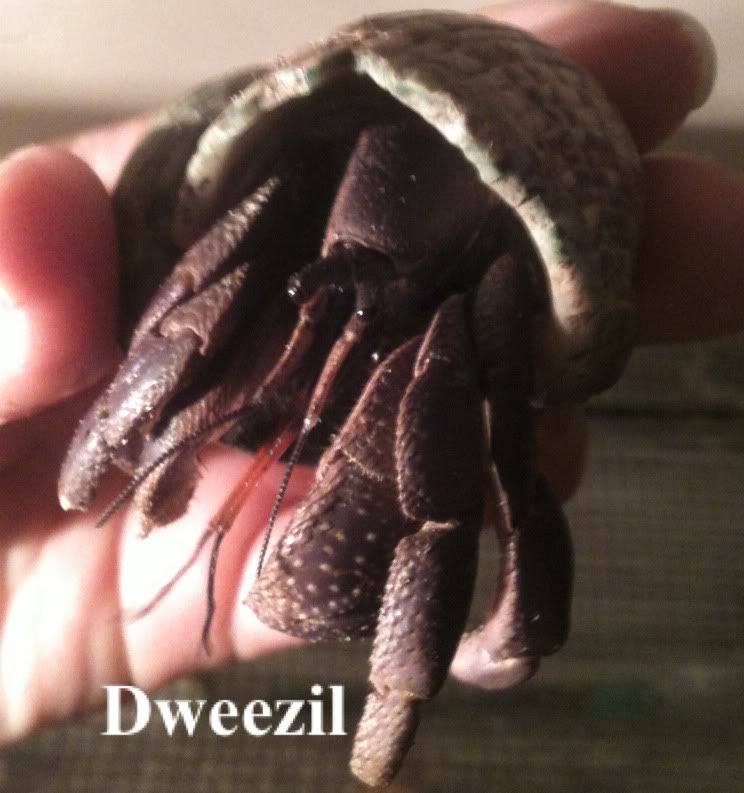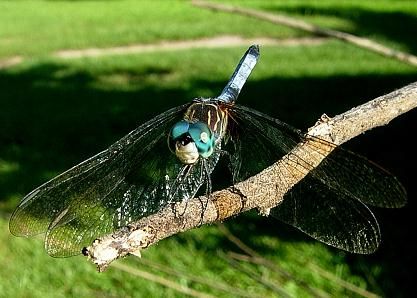Hopefully these charts will help you decide which length will give you the correct opening size. Many hours were spent carefully measuring and graphing, and I would like to give a big thanks to Wodesorel who donated her time to measure out her shells, as well! And another thanks to Mokulele_Hawai'i, who listed several latin names of hard-to-ID shells on the shell guide sticky.
Not every shell species is represented. If the sample size was too small (less than about 4), I left it out. If I felt certain species were similar enough to be combined, I combined them.
How to measure a shell:
The length is measured at the widest point, which includes all siphon canals, spines, etc.
The opening is measured as the usable space by the crab, so do not include the thickness of the shell or siphon canals in your measurement.
I've included a mm graph and an inch graph. Most collectors will use mm or cm in shell collecting even in the U.S. where we still cling to standard. We know that these shell relationships are not always linear, but the common ranges we buy them in are usually linear, so that is why a line is fitted to them.
How to read/use the graphs:
Based on the shell sample (red circles), the bold black line shows the average shell length for a corresponding shell opening. The inner set of dashed lines gives an estimate of the accuracy of the black line. Ideally, if enough shells are sampled, and if shell length for a given shell opening is not too variable or scattered, these lines will form a narrow band around the black line. This means that we can be relatively confident that the average line is accurate. It is clear in some graphs that the average line fits the shell data well, and in other graphs the shell data are too variable to be able to provide an accurate measure of the average shell length for shell opening. If the inner dashed lines are far apart, it means the shells are too variable and/or not enough shells were sampled, so the average length (black line) cannot be estimated from the opening very well. The black line is only a representation of the average shell lengths (which is why it goes through the points). So for any individual shell that is examined, the shell length will be shorter or longer (above or below the black line on the graph), but on average a bunch of shells will follow the black line. The equation for the line is available at the bottom of some of the graphs, the ones where the line was able to be measured accurately.
The wider space between the outer dashed lines show where about 95% of shell lengths are likely to be for corresponding shell openings. These outer lines are used to show, based on the sample data, where any single shell is probably going to be. So, if you go an pick up a shell with a certain opening, it is very likely to be between the outer dashed lines. If you sample a whole bunch of shells with the same size opening, about 95% of them should be between the outer lines. And as more shells are sampled, their overall average length should eventually land somewhere between the inner dashed lines.
To try it out, plug the value for the opening into the equation for the line (on a calculator) and get the length!
Common names: Magpie, Pica
Latin name: Cittarium Pica
Photo:



Common name: Tapestry turbo, spotted turbo, comes in other carved forms as well.
Latin name: Turbo petholatus
Photo:



Common names: Cammo turbo, Camo turbo; Jade turbo
Latin names: Turbo Marmoratus; T. Imperialis
Photos:




Common names: Striped turbo, Mexican turbo
Latin name: Turbo Fluctuosus
Photo:



Common names: Green turbo, calico turbo, silvermouth, goldmouth
Latin names: Turbo argyrostomus, T.setosus, T.sparverius, T.tumidulus
Photos:




Common name: Various Thais species.
Latin names: Thais biserialis, T. orbita, T. haemastoma, T. speciosa
Photos:




Common name: None
Latin name: Pugilina cochlidium
Photo:



Common name: Fox shell, striped fox, horse conch
Latin name: Pleuroploca trapezium
Photo:



Common name: Apple Murex
Latin name: Phyllonotus Pomum
Photo:



Common names: Virgin murex, pink murex, white murex, black murex (various murex species that were similar proportions.)
Latin names: Chicoreus virgineus, Hexaplex (Muricanthus) erythrostomus, Murex ramosus, Hexaplex nigritus
Photos:




Common names: Moon snails, shark eye, whales eye
Latin names: Euspira lewisii, Cryptonarctica affinis, Polinices duplicatus, Neverita didyma
Photos:




Common names: Fiber conch, crown conch, striped conch
Latin name: Melongena melongena
Photos:




Common name: None
Latin name: Macron aethiops
Photo:



Common name: None
Latin name: Littoraria zebra
Photo:



Common name: Tulip
Latin name: Fasciolaria tulipa
Photos:




Common name: Fusi
Latin name: Fasciolaria filamentosa
Photo:



Common name: None
Latin name: Cantharus Melanostomus
Photo:



Common name: Frog shell (1st type)
Latin name: Bursa rubeta
Photo:



Common name: Frog shell (2nd type)
Latin name: Bursa rana
Photo:



Common name: Various babylonia, giraffe shell
Latin names: Babylonia areolata, B. Spirata
Photos:





Common name: Japanese land snail shell, fairy snail
Latin name: Achatina Fuica (???)
Photo:



P.S.- Not sure if this should be a sticky or not? I guess we'll see how it works out? Didn't want to abuse my mod powers and put it as a sticky when it shouldn't be. I'll let somebody else decide.




